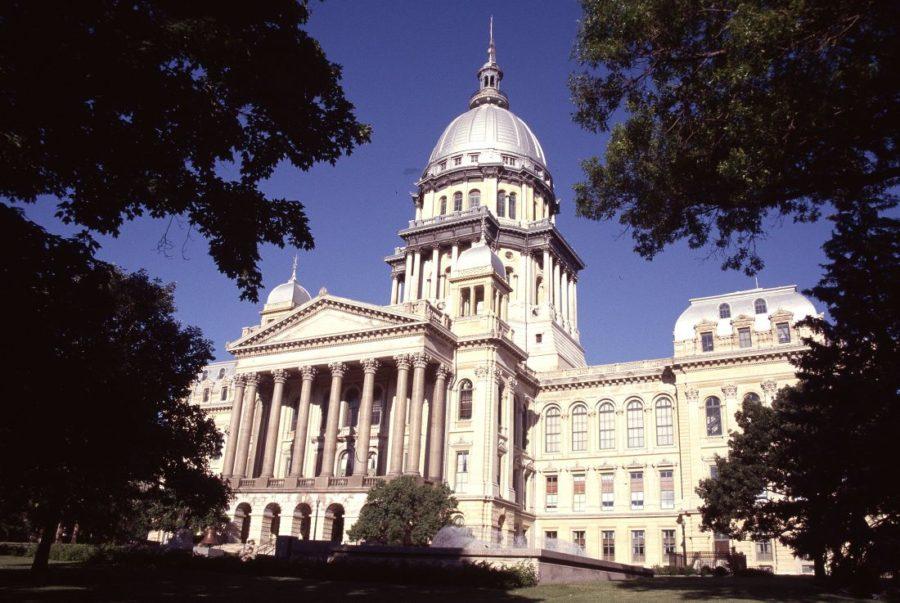State universities: Illinois budget stalemate causing damage ‘beyond repair’
January 20, 2016
With no money from the state in nearly seven months and its financial reserves almost depleted, Chicago State University says it will be unable to pay its employees come March unless money begins flowing again from Springfield.
“This is a crisis by every definition of the word crisis,” said Thomas Wogan, spokesman for the south side public university that serves about 4,800 students.
About 30 percent of the university’s funding — approximately $36 million a year — comes from the state. By March, the campus will not have enough money to meet its $5 million monthly payroll costs, Wogan warned Tuesday.
Advertisement
“We will have to find solutions to finish our semester without enough cash to operate,” he said.
While Chicago State is the first school to lay out the dire scenario, other campuses heavily dependent on state funding may not be far behind. Northeastern Illinois University President Sharon Hahs said while she anticipates completing the spring semester, “there is potential for our university to shut down” without an “adequate appropriation” soon.
Universities have been without state money since July as Republican Gov. Bruce Rauner and Democrats who control the General Assembly can’t agree on a budget. In a letter sent Friday to Rauner and legislative leaders, the presidents of the state’s nine public universities said the stalemate will result in public higher education being “damaged beyond repair.”
That letter, and a Wednesday morning news conference called by a new coalition of university officials, businesses and labor groups, are part of a push to draw attention to the budget stalemate’s impact on state universities. Even if a deal is reached, the campuses are likely to see their funding slashed. Rauner had proposed a 31 percent cut to higher education, while the budget that Democrats sent to the governor included a 6.5 percent cut.
“When colleges and universities reach this point of no return — when bills cannot be paid and payroll cannot be met — they will close,” the university presidents wrote in the letter, which was obtained by the Tribune. “The results will be catastrophic for the economy of the State of Illinois and it will shatter the dreams and lives of hundreds of thousands of Illinois students and families.”
At Chicago State, officials are drawing up plans in case money dries up in March. Wogan said trustees could declare financial exigency to retool labor contracts. Faculty may be asked to work without pay so students can finish the semester. Some of the school’s 800 employees may get laid off. Student services could be cut.
“It would be trying to have the university operate on the most bare-bones level,” Wogan said.
Advertisement*
Schools such as the University of Illinois and Illinois State University, which have larger reserves and endowments, will have an easier time filling the gap until the budget battle is over. Smaller campuses, including Governors State University, Western Illinois University and Chicago State, are considering asking the state for approval to borrow money.
The budget impasse has led universities to scale back in a variety of ways. At Western Illinois, which gets 21 percent of its $245 million budget from the state, the men’s tennis team was cut and some positions were reduced to 10 months instead of 12. At Illinois State, which gets about 17 percent of its $425 million budget from the state, staff have not had pay increases since July 2014.
The campuses also have been covering the cost of state scholarships for low-income students known as Monetary Award Program grants, which have been on hold during the budget impasse. The campuses have been funding the grants with the expectation that they will be repaid when there’s a budget.
U of I, for example, has covered about $61 million for about 15,000 students in the fall and spring semesters. Qualifying students receive a maximum of $4,720 a year.
Last week, Sen. Pat McGuire, a Joliet Democrat who chairs the Higher Education Committee, called on the governor to release $168 million to cover the costs of the MAP grants, an idea Rauner’s office pushed back against.
In a memo to lawmakers from Richard Goldberg, Rauner’s deputy chief of staff for legislative affairs, the administration questioned spending at universities, saying tuition continues to rise but there’s no way to determine how “fiscally responsible” schools have been.
“As you know, appropriating hundreds of millions of dollars in General Revenue funds for MAP or general higher education without finding offsets — whether in the form of spending reductions or cost-saving reforms — could trigger a cash flow crisis in Illinois,” Goldberg wrote.
The budget crisis also is having an impact on high school seniors as they decide where to enroll this fall. School officials have been walking a fine line between declaring the stalemate a crisis to pressure lawmakers and the governor to take action, and running the risk of scaring off potential students.
“Our admissions team has been increasing its recruiting efforts into even more schools in Illinois, yet interest in Illinois public higher education continues to wane,” said Western Illinois spokeswoman Darcie Shinberger.
Illinois State University President Larry Dietz, who leads the state universities’ presidents and chancellors group, said he hopes lawmakers understand “the urgency of the situation as we move into the spring semester.”
“No institution can handle this complete disinvestment in higher education. We all need a (budget) figure,” Dietz said. “The idea that the state of Illinois has decided … not to fund anything, to me is highly unusual if not unconscionable.”
Tribune reporter Monique Garcia contributed.
(c)2016 the Chicago Tribune
Visit the Chicago Tribune at www.chicagotribune.com
Distributed by Tribune Content Agency, LLC.
Advertisement









